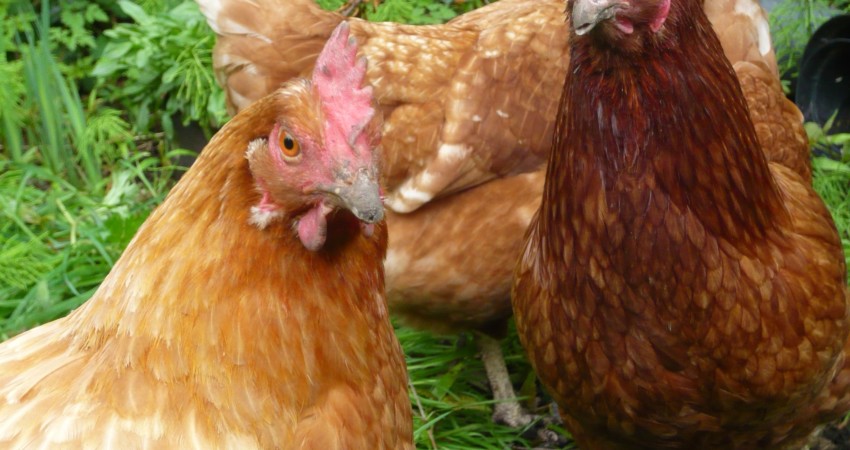

Avian Influenza (AI) is a contagious viral infection which can affect all species of birds. In intensive poultry rearing systems young fattening turkeys and laying hens are usually the most affected species.
Free-living birds may carry influenza viruses without becoming ill due to a natural resistance. It is known that wild waterfowl present a natural reservoir for these viruses and can be responsible for the primary introduction of infection into domestic poultry.
Causative agent
The virus causing avian influenza is an Influenzavirus A virus of the family Orthomyxoviridae. Several virus subtypes exist, which are divided on the bases of the antigenic relationships in the virus glycoproteins haemoagglutinin (H) and neuraminidase (N). At present 15 H subtypes have been recognised (H1-H15) and nine neuraminidase subtypes (N1- N9).
Influenza A viruses infecting poultry can also be divided on the basis of their pathogenicity (ability to cause disease).
The very virulent viruses cause highly pathogenic avian influenza (HPAI) with mortality in poultry as high as 100%. In the whole world there have been only 19 reported primary isolates of such viruses from domestic poultry since 1959. A severe epidemic occurred in Italy in 1999/2000 causing 413 outbreaks with 16 Million birds affected.
Other AI viruses cause a much milder disease (low pathogenic avian influenza, LPAI). Clinical signs are much less evident or even absent and mortality is much lower.
Sometimes secondary infections or environmental conditions may cause exacerbation of LPAI infections leading to more serious disease. Evidence suggests that certain avian influenza virus subtypes of low pathogenicity may, after circulation for some time in a poultry population, mutate into highly pathogenic virus strains.
To date only viruses of H5 and H7 subtype have been shown to cause HPAI in susceptible species, but not all H5 and H7 viruses are highly pathogenic.
Clinical symptoms
The main symptoms of HPAI in poultry are depression, loss of appetite, cessation of egg laying, nervous signs, swelling and blue discoloration of combs and wattles due to disturbance of blood circulation, coughing, sneezing and diarrhoea. Sudden death can occur without any previous signs. The mortality rate may reach up to 100% depending on the species, their age, the virus type involved and environmental factors like concurrent bacterial infections.
Clinical signs of LPAI consist primarily of mild respiratory disease, depression and drop in egg production in laying birds.
The incubation periods for these viruses range from as short as a few hours to 3 days in individual birds and up to 14 days to spread throughout a flock.
Transmission and spread
All the available evidence suggests that the most common primary introduction of AI viruses into an area is by wild birds, usually waterfowl, but gulls and shorebirds have also been implicated. Direct contact between wild bird and poultry is not always necessary for introduction of virus into poultry farms, as infected waterfowl may spread AI viruses by infective faeces into an area and these may then be introduced to poultry farms by a variety of mechanisms that may transfer the virus mechanically. If contaminated with influenza viruses, surface water used as drinking water may also be a source of infection. Poultry kept in free range or poultry which have access to surface water are at specific risk. AI is transmitted within a farm by direct contact of infected animals with healthy animals, or indirect contacts with contaminated equipment or farm staff.
Spread of AI viruses from farm to farm is mainly by mechanical transfer of infective faeces, in which virus may be present at high concentrations and may survive for considerable periods. Shared water or food may also become contaminated.
However, man is a very important cause of secondary spread of AI for domestic poultry. Caretakers, farmers, workers, trucks and drivers visiting farms, moving birds or delivering food have caused the spread of AI virus both on to and within farms.
Vaccination
The existence of a large number of virus subtypes together with the known variation of different strains within a subtype pose serious problems when selecting strains to produce influenza vaccines and to use vaccination as a routine tool for disease prevention.
Vaccination against AI is currently being applied in some regions of Italy using Heterologous vaccine
However, the immunity induced by vaccination may not be sufficiently rapid to stop farm-to-farm spread of HPAI. Furthermore, emergency vaccination is also hindered by practical difficulties related to the administration of the vaccine (each single bird must be injected).
 Contact Jaguza Support
Contact Jaguza Support